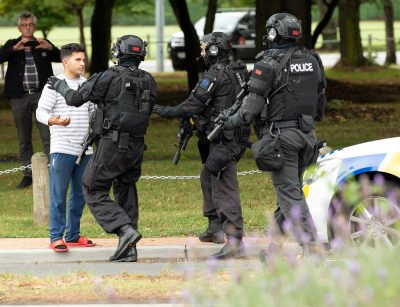New Zealand: Will New Zealand Look to Australia to Expand Anti-Terrorism Legislation?
Publication: Terrorism Monitor
By: Brian M. Perkins
The Jamestown Foundation

On March 15, a mass shooting at the al-Noor Mosque and Linwood Islamic Centre in Christchurch, New Zealand left 50 people dead and at least 50 others injured. The suspect, Brenton Tarrant, is a 28-year-old Australian that authorities have described as a violent, right-wing extremist. Tarrant livestreamed the attack, and the video ultimately began circulating on the internet. The attack primarily underscored the threat of right-wing extremism in New Zealand, but it also pointed to how vulnerable the state could be to similar style attacks in the future and raised the specter of attacks motivated by vengeance.
Following the shooting in Christchurch, al-Qaeda in the Islamic Maghreb (AQIM) and Jama’at Nusrat al-Islam wal Muslimeen (JNIM) released a joint statement condemning the attack and calling on Muslims to retaliate. The groups vowed that the mass shooting would “not pass without a response” (Jihadology, March 18). Countless other terrorist groups including al-Shabaab, Ansar al-Islam, Ansar al-Din, and pro-IS groups have issued similar statements threatening attacks against Westerners in New Zealand, Australia, and more broadly against the rest of the West (Jihadology, March 16).
Inconsistencies with the application of anti-terrorism laws will likely mean Tarrant will never actually face terrorism charges, despite politicians referring to the shooting as a terrorist attack. However, the violent incident coupled with calls for retaliation will likely lead to a political response that will serve to broaden counter-terrorism strategies as a whole rather than just addressing the particular brand of ideology underlying the shooting.
New Zealand has already rushed through proposed legislation to ban assault rifles and will likely look to review or amend other related legislation as a catch all. New Zealand does not have as broad or expansive anti-terrorism legislation as nearby Australia. In fact, anti-terrorism legislation in Australia seems to broaden each year, most recently with proposed laws allowing Australian dual citizens to be stripped of their citizenship, granting access to encrypted messaging platforms, and establishing that “there will be a presumption that neither bail nor parole will be granted to those persons who have demonstrated support for, or have links to, terrorist activity” (See Terrorism Monitor, January 11). [1] Meanwhile, New Zealand’s laws have remained relatively static, with only a few amendments to the Terrorism Suppression Act of 2007.
While Tarrant was not on authorities’ radar, among the top provisions of the Terrorism Suppression Act of 2007 that will likely come under review is a provision that limits warrantless surveillance to a 24-hour period as well as the state’s ability to monitor social media (Stuff.co.nz, March 31, 2016). In view of preventing such attacks from recurring, politicians could seek to broaden the state’s ability to proactively surveil suspects for longer periods of time while expanding the scope of activities that might facilitate such surveillance.
New Zealand and Australia maintain a close counter-terrorism partnership and Australian legislation provides a ready-made template for New Zealand to draw from. However, doing so would be an outsized response given that the threat profile to New Zealand is still significantly lower than that of Australia and this specific attack and the subsequent calls for retaliation do not necessarily indicate an upward trend.
Notes
[1] See Justice Legislation (Links to Terrorist Activity) Amendment Bill 2018 https://www.parliament.qld.gov.au/Documents/TableOffice/TabledPapers/2018/5618T1852.PDF
The Jamestown Foundation kindly allows Modern Tokyo Times to publish their highly esteemed articles. Please follow and check The Jamestown Foundation website at http://www.jamestown.org
https://twitter.com/JamestownTweets The Jamestown Foundation
https://jamestown.org/program/briefs-301/
Photo source: The original image in The Jamestown Foundation article was cny.org